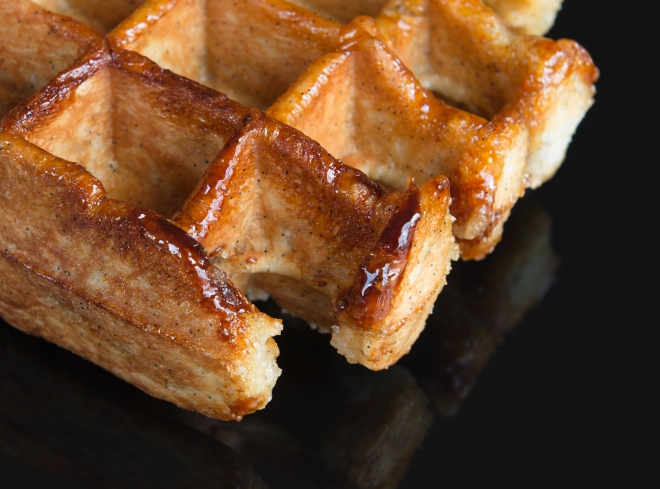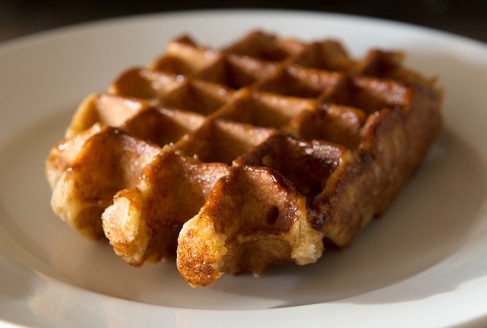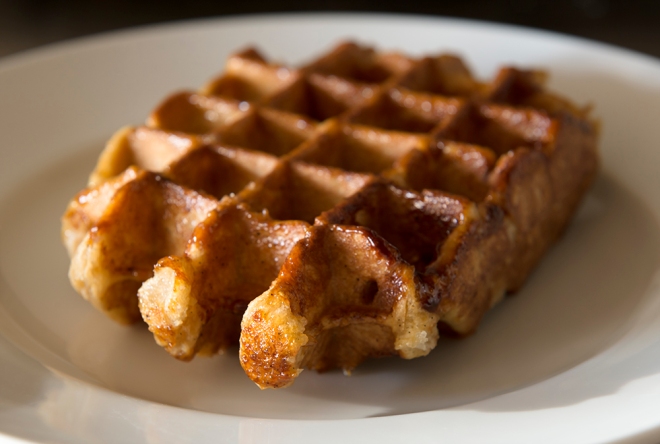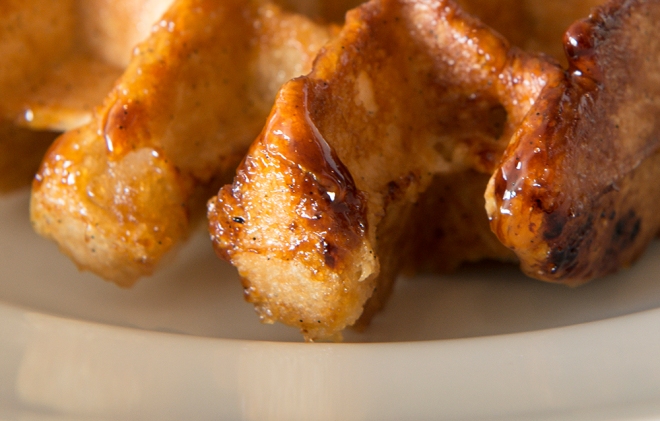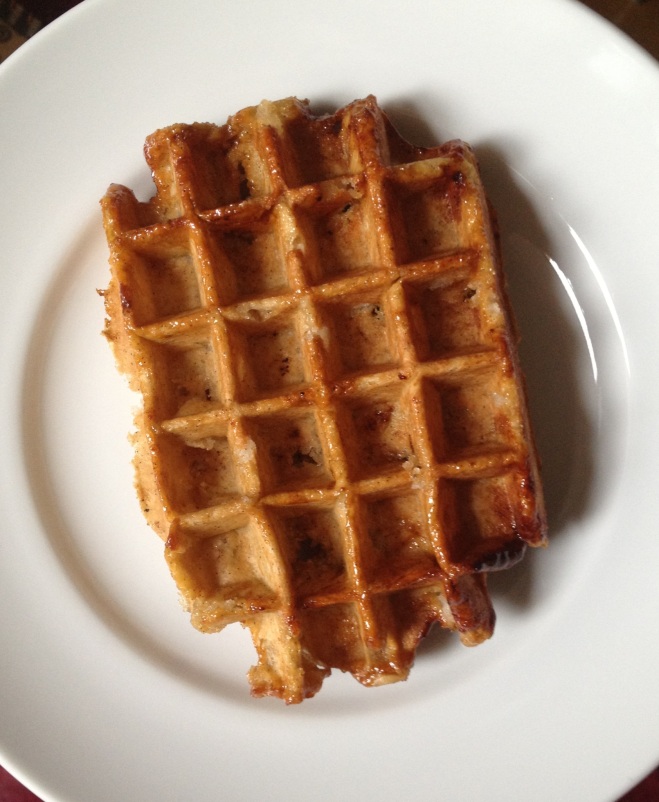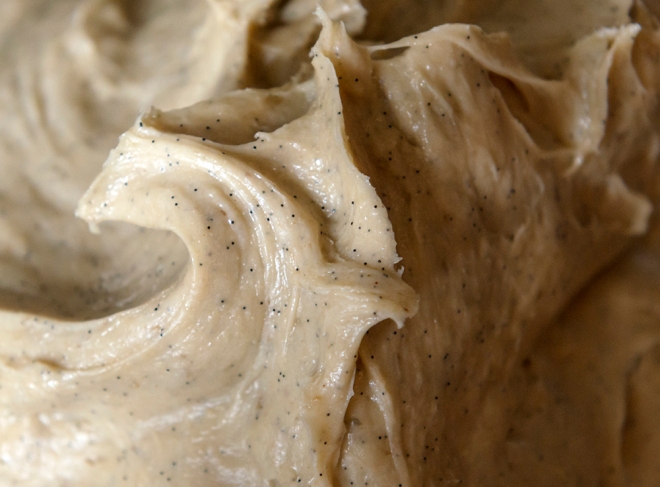This coming weekend, I’m going to retire the recipe that’s been up for the last 6 years. It’s good, but the new one is far more authentic, easier, and all-around better. Yet in the event anyone just loves the old one, I wanted to keep it up in some capacity. So here you are…
INGREDIENTS makes 5 Gaufres de Liège Click here for the updated and much more advanced metric version of the recipe
• 1 1/2 tsp. active dry yeast
• 1/4 cup scalded whole milk at 110-115 degrees
• 2 Tbsp. + 2 tsp. of water at 110-115 degrees
• 2 cups King Arthur Bread flour
• 1 large room temperature egg, lightly beaten
• 1Tbsp. + 1 tsp. light brown sugar
• 3/4 tsp. salt
• 8 1/2 Tbsp. soft room temperature unsalted butter
• 1 Tbsp. honey
• 2 tsp. Mexican vanilla extract
• 3/4 cup Belgian Pearl Sugar (“Waffle Pantry” is the best source for authentic Belgian pearl sugar)
DIRECTIONS
1. Place yeast, milk, and water into the workbowl of a stand mixer. Stir for a few seconds to moisten the yeast.
2. Add the egg and 2/3 of a cup of the flour. Mix to blend. Scrape down sides of bowl.
3. Sprinkle remaining 1 and 1/3 cups of flour over the mixture, but do not stir it in. Cover and let stand 75-90 minutes (at the end of that time, you’ll notice the batter bubbling up through the cover of flour).
4. Add the brown sugar and salt to the workbowl with the other ingredients. Mix on low speed (speed #2) – just to blend.
5. With machine on low, add honey and vanilla. Then add 2 Tbsp. of butter at a time. Mix 4 minutes at medium-low speed; scrape down sides once or twice in that period. Let the dough rest for 1 minute and then continue to mix for 2 minutes. If you measured your ingredients perfectly, the dough will be sticking to the sides of the bowl in the last minute of mixing and then, in the last 30 seconds of so, will start to ball-up on the paddle. If this does not happen, let the dough rest for 1 more minute and mix for another 2 minutes.
6. Scrape the dough into a large bowl, sprinkle lightly with flour, cover with plastic wrap and let rise at room temperature for 4 hours. This step is crucial for developing the flavor.
7. REFRIGERATE FOR 30 MINUTES BEFORE PROCEEDING TO STEP #8. This is essential. The yeast respiration must be slowed before continuing.
8. Stir the dough down (meaning: gently deflate the gases from the dough, by pressing on it with a rubber spatula), scrape it onto a piece of plastic wrap, and then use the spatula to press the dough into a long rectangle. Fold that rectangle over on itself (by thirds – like a letter) so that you have a square of dough. Wrap it in plastic, weigh it down a bit (I put two heavy dinner plates on top of it) and refrigerate overnight.
9. The next day, place the cold dough (it will be quite firm) in a large bowl and add all of the pearl sugar to a bowl. It will seem like a lot of sugar, but it’s supposed to be 🙂 Mix it into the dough by hand until the chunks are well-distrubuted. Once mixed, divide the dough into 5 pieces of equal size.
10. Shape each chunk into an oval ball (like a football without the pointy ends) and let it rise (covered loosely in plastic wrap) for 90 minutes.
11. If you have a professional waffle iron (meaning: it’s cast iron and weighs over 20 pounds) cook at exactly 365-370 degrees (the max temp before sugar begins to burn/decompose) for approximately 2 minutes.
** Give each waffle a few minutes to cool slightly before eating. No syrup or toppings are needed, unless you’d like to add some fruit or a dusting of powdered sugar; they’re quite sweet on their own.
** If you have a regular waffle iron, heat the iron to 420 degrees (hint: many regular waffle irons go up to and over 550 degrees at their highest setting) , place the dough on the iron, and immediately unplug it or turn the temp dial all the way down. Otherwise, the sugar will burn.

